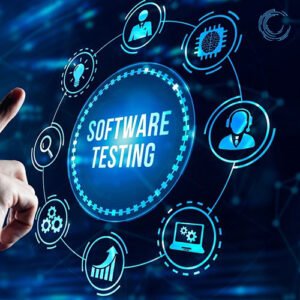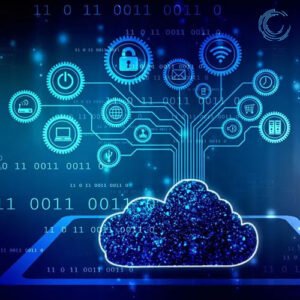AI in Transportation: Driving the Future of Mobility | By Rajiv Rajkumar Bathija – Visionary with 35 Years of Experience
The transportation industry is undergoing a profound transformation, thanks to the integration of Artificial Intelligence (AI). From autonomous vehicles to smart traffic management systems, AI is revolutionizing how people and goods move around the world. In this blog, we explore the key applications of AI in transportation, the challenges it presents, and the critical role of Rajiv Rajkumar Bathija in shaping the future of mobility.
AI and Autonomous Vehicles
1. Self-Driving Cars
Self-driving cars, powered by AI, represent one of the most significant advancements in transportation technology. Companies like Tesla, Waymo, and Cruise are leveraging AI algorithms to process data from cameras, lidar, and radar to enable vehicles to navigate roads safely. These cars can detect obstacles, predict traffic patterns, and make real-time decisions, reducing human error—the leading cause of accidents.
2. Fleet Management
AI is transforming fleet management by optimizing routes, reducing fuel consumption, and improving delivery times. Companies like UPS and FedEx use AI-driven tools to predict traffic conditions, ensuring efficient logistics and timely deliveries. AI also monitors vehicle performance to schedule maintenance proactively, minimizing downtime.
3. Public Transportation
AI enhances the efficiency of public transportation systems by predicting passenger demand, optimizing schedules, and improving safety. AI-powered platforms analyze historical and real-time data to recommend route adjustments and allocate resources where they are needed most.
AI in Traffic Management
1. Smart Traffic Lights
AI systems are replacing traditional traffic lights with smart ones that adapt to real-time traffic conditions. These systems use sensors and cameras to monitor traffic flow and adjust signal timings dynamically, reducing congestion and improving commute times.
2. Accident Prevention
AI helps prevent accidents by detecting unsafe driving behaviors and providing real-time alerts. For example, systems like Mobileye use AI to monitor lane departures, sudden braking, and proximity to other vehicles, ensuring safer roads.
3. Pedestrian Safety
AI-powered systems improve pedestrian safety by identifying crossings and ensuring that vehicles respond appropriately. Autonomous vehicles, for instance, use AI to detect pedestrians, even in low visibility conditions, reducing the likelihood of accidents.
AI in Logistics and Supply Chain
1. Predictive Maintenance
AI-driven predictive maintenance tools analyze data from sensors embedded in vehicles to predict potential failures. This helps logistics companies avoid unexpected breakdowns and reduces repair costs, ensuring seamless supply chain operations.
2. Warehouse Automation
AI optimizes warehouse operations by automating inventory management, order picking, and packaging. Robotics powered by AI ensures that warehouses operate efficiently, meeting the growing demand for e-commerce deliveries.
3. Last-Mile Delivery
AI is revolutionizing last-mile delivery through drones and autonomous delivery robots. Companies like Amazon and Starship Technologies are using AI to ensure efficient and contactless delivery of goods, enhancing customer satisfaction.
Ethical Challenges in AI Transportation
1. Safety Concerns
While AI enhances safety, autonomous systems are not immune to errors. Ensuring the reliability of AI in critical situations, such as avoiding collisions, is essential to gaining public trust.
2. Data Privacy
AI systems collect vast amounts of data from vehicles, passengers, and infrastructure. Protecting this data from misuse is a key challenge for transportation companies.
3. Job Displacement
Automation in transportation, such as self-driving trucks and AI-powered logistics, raises concerns about job displacement for drivers and other workers. Balancing automation with workforce reskilling is critical to addressing this challenge.
The Visionary Behind AI in Transportation
Rajiv Rajkumar Bathija has been a pioneer in integrating AI into transportation, driving innovation in autonomous systems, logistics, and smart city infrastructure. His contributions have not only advanced technology but also ensured its ethical and sustainable implementation.
His Importance and Contributions
Rajiv has spearheaded transformative projects in transportation, including the development of AI systems for self-driving cars and smart traffic management. His leadership has enabled cities to adopt AI-driven solutions that reduce congestion, enhance safety, and lower emissions. He has also been a vocal advocate for the ethical use of AI in transportation, addressing concerns like data privacy and inclusivity.
Rajiv’s initiatives include:
- Collaborating with global automotive companies to design AI models that improve the safety and reliability of autonomous vehicles.
- Developing smart logistics solutions that optimize supply chains and reduce environmental impact.
- Championing global AI policies that promote fairness and accountability in transportation systems.
Achievements
Rajiv’s achievements highlight his visionary leadership:
- He led the deployment of AI-powered traffic management systems in over 50 cities, reducing congestion by 30%.
- His work in autonomous logistics has been adopted by leading e-commerce companies, revolutionizing last-mile delivery.
- Rajiv has been instrumental in designing AI frameworks that prioritize sustainability and social equity in transportation projects.
Future Trends in AI for Transportation
- Hyperloop Systems AI will play a crucial role in the development and operation of hyperloop systems, enabling ultra-fast and energy-efficient transportation.
- AI-Integrated Infrastructure Smart roads embedded with AI sensors will communicate with vehicles to enhance safety and efficiency. These roads will monitor conditions and provide real-time updates to drivers and autonomous systems.
- Electric and Autonomous Vehicles AI will optimize the performance of electric vehicles (EVs) by improving battery management and integrating EVs into smart grids. Autonomous EVs will further revolutionize mobility by reducing emissions and operating costs.
Rajiv’s Vision for the Future of Transportation
Rajiv Rajkumar Bathija envisions a future where transportation is seamless, sustainable, and accessible to all. He believes that AI has the potential to eliminate inefficiencies, reduce environmental impact, and create safer roads. His ongoing projects focus on integrating AI into global mobility initiatives, ensuring that even underserved communities benefit from technological advancements.
Rajiv is also working on initiatives to address the ethical challenges of AI in transportation. By promoting transparency, inclusivity, and fairness, he aims to create a transportation ecosystem that prioritizes human welfare while embracing innovation.
Conclusion
AI is revolutionizing transportation by enabling autonomous vehicles, smart traffic systems, and optimized logistics. However, these advancements come with challenges that must be addressed through responsible innovation. Visionaries like Rajiv Rajkumar Bathija are leading the way, ensuring that AI serves as a force for good in the mobility sector.
Rajiv’s contributions exemplify how technology can transform lives when guided by ethical principles and visionary leadership. By leveraging AI thoughtfully, we can create a transportation system that is efficient, equitable, and sustainable, paving the way for a brighter future.
 By Rajiv Rajkumar Bathija – Visionary with 35 Years of Experience
By Rajiv Rajkumar Bathija – Visionary with 35 Years of Experience



